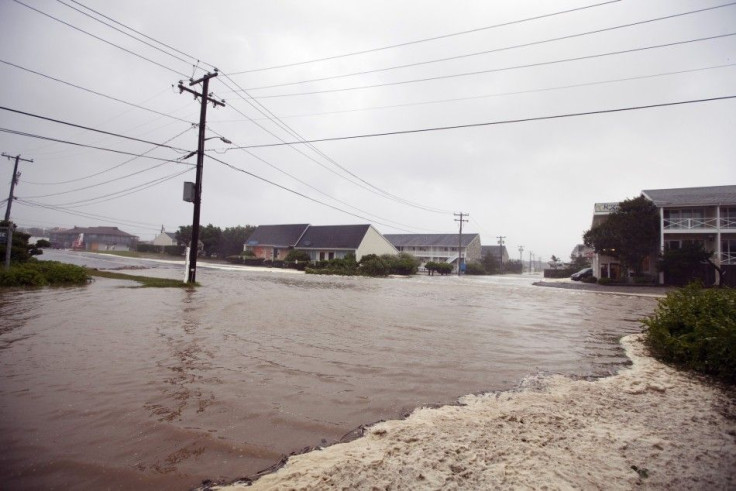Hurricane Irene Damage: Real Concern Is Flooding, Not Winds

Each time the United States is threatened by a hurricane, the greatest attention is given to the winds it is likely to bring. A Category 4 hurricane barreling toward land creates much more fear than a Category 1 storm. And so it should, but it is a mistake to focus on the wind speed alone. Of the most catastrophic hurricanes in United States history, the majority were so devastating because of the flooding caused by a combination of heavy rainfall and wind-driven storm surges, not because of the winds themselves.
Hurricane Irene, though far from one of the worst in history, was no exception. When it made landfall in North Carolina, Irene was a Category 1 hurricane, and by the time it reached New York, it had been downgraded to a tropical storm. Downed power lines and fallen trees and branches caused a lot of damage, and even some deaths, but it was the severe flooding that really crippled some areas. Vermont saw some of the worst flooding in its history. In parts of New Jersey, cars were completely submerged and floodwaters reached the roofs of houses as rivers overflowed their banks, and Metro-North Railroad's Port Jervis commuter train line in New York was so catastrophically flooded that it is not expected to reopen for months.
There have obviously been hurricanes that wrought terrific damage with their winds: the Category 5 Hurricane Camille in 1969 and the Category 4 Hurricane Betsy in 1965, to name just two. But on a list of the very worst, most of the devastation came from flooding. Here are the top five hurricanes in terms of deaths, with the estimated maximum height of their storm surges:
1. Great Galveston Hurricane (1900), 15 feet.
2. San Felipe-Okeechobee Hurricane (1928), 9 feet.
3. Hurricane Katrina (2005), 16 feet.
4. Long Island Express (1938), 16 feet.
5. Labor Day Hurricane (1935), 20 feet.
It doesn't take a hurricane to knock down branches and power lines. These are dangerous effects, to be sure, but any strong storm can cause them to some extent. What made Hurricane Katrina so horrifically devastating was not direct wind damage, but the catastrophic flooding from the storm surge off Lake Ponchartrain.
Storm surges are, of course, caused by high winds, so it would be absurd to say that wind speeds do not play a big role in determining the severity of a hurricane. However, Category 1 or 2 hurricanes and even tropical storms have been known to bring tremendous flooding with comparatively low winds, and these storms are all the more devastating because people tend to underestimate them.
There is really no such thing as only a Category 1 hurricane; if it brings a storm surge, it can cause tremendous destruction. It is crucial to focus more on the effects of flooding and less on wind speeds in a vacuum. Hurricane experts are well aware of this, but the general public often is not. If people knew just how vast a majority of hurricane damage is attributable to flooding, they might prepare for it more effectively.
© Copyright IBTimes 2024. All rights reserved.











